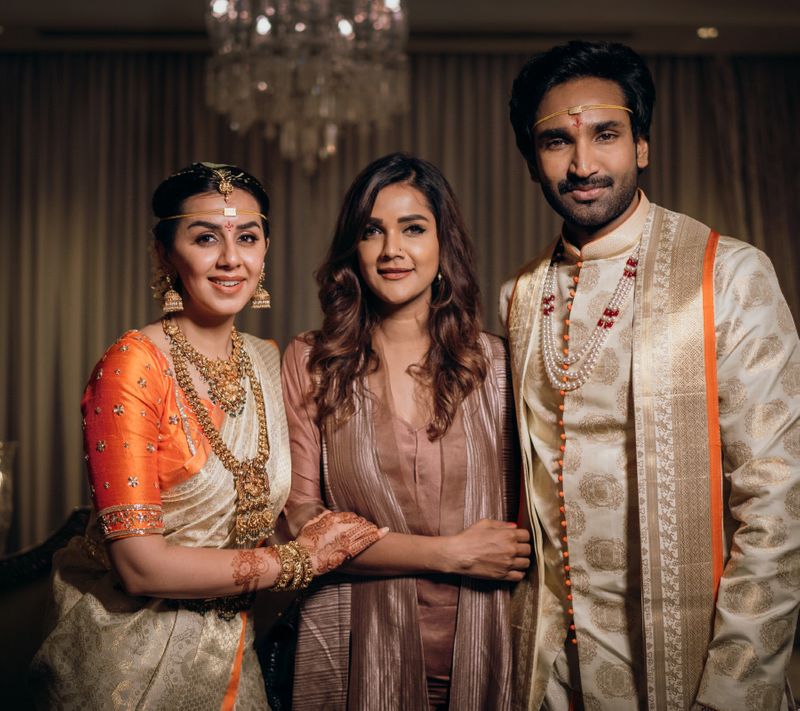When you think of the big-fat Indian wedding, what comes to mind? Extravagant décor, 150 more guests than one can handle, lavish spread of food that covers all possible cuisines—from chaat to sushi, paanwala flown in from Lucknow, and all of this at a place like Bali or Maldives or even Goa. Are we getting warm?
Now picture this. Customised invites, a venue decorated so elegantly that it transports you to another world, a menu curated so specifically that you’d think they called to ask you for your preferences, mini events that lead up to the main wedding in such a meticulous fashion that you would want to attend them all, and wedding favours that will steal your heart. Yes, the big fat Indian wedding is changing.
Luxe event designer and founder of the Chennai-based company, The A-Cube Project, Ambika Gupta says: “While for years, fairy-tale and destination weddings have been the ultimate dream, today most couples are opting to have more intimate celebrations, focusing on the smaller details. Right from invites to the food, couples are increasingly looking for innovative ways to add a personal touch and signature to the event that will set them apart from the rest adding scope for experimentation.”
Let’s go green
The other factor that has come to play is people are also becoming environment conscious. "Carbon footprint is becoming a definite topic of discussion, and couples are opting for green weddings or sustainable weddings to reduce the event’s effect on the environment,” she says.

Gupta—who put together a breathtaking wedding for film actors Nikki Galrani (Tamil and Malayalam cinema) and Aadhi Pinisetty (Tamil and Telugu cinema) a few months ago—picked every single element extremely thoughtfully. “We used shola flowers from West Bengal to decorate the stage and it made the whole place look ethereal,” she says, adding, “Actor Kajal Aggarwal took the initiative to incorporate recyclable elements and give recognition to coconut farmers by using pettis for her haldi bridal backdrop.” Sourcing locally is yet another way to ensure you keep a check on your carbon footprint. Gupta sourced traditional flowers such as the tube rose and white lotus too, as part of the décor for the actors’ wedding.
Intimate and personal

Intimate settings are yet another change that’s slowly creeping into wedding, especially after the pandemic. “Using Nikki and Aadhi’s wedding as an example, they had their mehendi in their garden and we all saw how Bollywood celebrities Alia Bhatt and Ranbir Kapoor tied the knot in their living room. Even in the most intimate weddings, couples are looking for extremely personalised décor. And the best part is the challenge that comes with it—to be creative with décor when space is limited,” Gupta explains.
Even when it comes to food, personalisation is key. “Choices are constantly evolving with changing trends. Couples personalise cocktails, appetisers, and main course according to the theme of the event. We are always looking to push our boundaries so we can cater to the newer demands,” she says.
Yet another thing to keep in mind is that stories always add to the personal touch when it comes to planning weddings. “We heard stories of how Aadhi and Nikki met, how their relationship developed over time, their romance, their friendship—and these stories actually enabled us to weave a perfect wedding for them,” Gupta says.

Home is the best destination
One of the effects of trying to be eco-conscious is that a lot of young couples are also preferring to be married on their home turf. But that does not mean one cannot bring Bali to their living room. From setting up a Middle Eastern ambience for a sangeet and an engagement party at a faux Chettinad home to a wedding that’s inspired from the Louvre Museum in Paris—Gupta points out that a customised theme can elevate any wedding, as long as the elements are not ad-hoc but detailed. “It’s important to make sure everything, no matter how small, comes together properly, flows from one to the other, and doesn't look like everything was slapped on in a hurry,” says Gupta, signing off.




